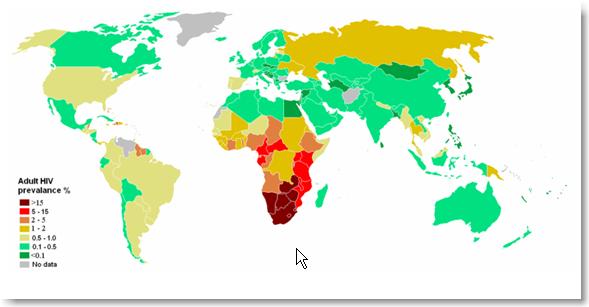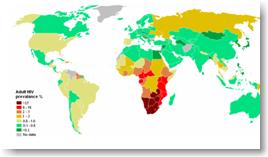|
Digital News Report – Within 5 years HIV infections can be halted and within 40 years the disease could be eradicated from the globe, a researcher told attendees of the American Association for the Advancement of Science (AAAS) annual meeting in San Diego on Saturday.
Brian Williams, a research fellow at the South African Centre for Epidemiological Modeling and Analysis, believes that with testing in high-risk regions and immediate treatment, AIDS / HIV could be a thing of the past.
“We’ve been using drugs to save lives, but not stop the infection,” Williams said. “It’s time to look beyond that.”
There was a lot of hope today at the conference, but professor of medicine and community health at Brown University, Kenneth H. Meyer, cautioned that since patients are living longer, there are more new infections than deaths. The trend will continue in “high-risk regions”.
Although a 2006 Joint United Nations Programme on HIV/AIDS estimated that HIV infects less than one percent of the population, Meyer says that in “hot spots” like Washington DC the virus could infect 1 in 15 people (or about 6%). Compounding the problem, he said that 20-25% of people infected with HIV in the United States don’t know they have it.
Dennis Burton, professor at Scripps Research Institute, said that scientists have made “exciting advances” in the development of a vaccine. If a vaccine is created they will be much closer to irradiating the virus.
Williams estimates that the cost of the drugs would be $2-3 billion per year. That would treat six million HIV-positive patients, or about 30 percent of the people who need it. The UN has estimated that HIV has killed 25 million people already. “The only thing more expensive than this plan, for health care costs and deaths, is doing nothing,” Williams said.
Avert, and international AIDS charity, estimates that between 31 and 36 million people are infected worldwide, of which 23 million are in Africa. They estimate that 1.4 million people have the disease in North America.

Image: Per country estimated prevalence of HIV among young adults (15-49) at the end of 2005.
By: Jason Chang
Health Writer

